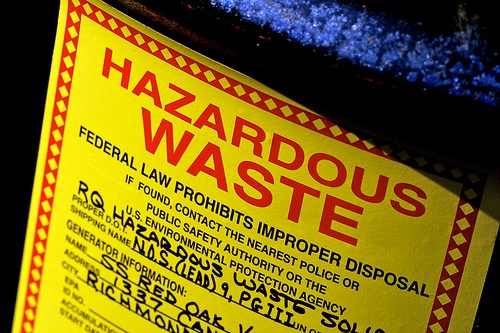The reality is that suicide rates in the U.S. have gone up considerably in recent years, claiming an average of 36,000 lives annually.1 While most suicides take place at, or near, a person’s home, suicide on the job is also increasing according to federal researchers. The Bureau of Labor Statistics reported that workplace suicides rose to 282 in 2013 reaching the highest level since the numbers have been reported by the occupational fatality census. In 2014, the suicide rate went down slightly to 271, which is the second highest level since the records have been kept. The annual average number of suicide deaths that occurred at work during the time period 2003 – 2014 is 237. Between 2003 and 2014 there were a total of 2,848 suicide deaths that occurred at work.2 The rise in suicide rates at work is even more significant when taken in the context that overall homicides in the workplace have been steadily decreasing since the mid-nineties.
Read MoreAudit, Compliance and Risk Blog
Tags: Employer Best Practices, Employee Rights, Workplace violence
Super Priority Charge Over Insolvent Corporation’s Assets Despite Existing Insurance Coverage
Posted by Ron Davis on Tue, Mar 01, 2016
The Ontario Superior Court of Justice issued an initial order in an insolvency proceeding under the Companies’ Creditors Arrangement Act (CCAA) providing a $3.1 million director’s charge even though the directors were covered by an existing D&O liability insurance policy and indemnities from the company (Re P.T. Holdco Inc., 2016 ONSC 495). The CCAA proceedings involved various corporate entities involved in the Primus telecommunications service business in Canada and the United States. Primus’ business was failing and it had arranged to sell its business to another company and wished to use the CCAA to finalize the sale and distribute the sale assets while its creditors were stayed from enforcing their claims.
Read MoreTags: Corporate Governance, Insurance, Canadian, directors, directors & officers
Federal laws (commonly referred to as RCRA, after the Resource Conservation and Recovery Act of 1976) provide comprehensive management requirements for parties involved in hazardous waste management, from “cradle to grave” covering generators, transporters, and offsite management facilities. Among these many provisions are requirements that “large quantity generators (LQGs)” submit biennial reports to the Environmental Protection Agency (EPA) or delegated states in March of every even-numbered year. March 2016 is the next such deadline, so now is a good time to review biennial report requirements.
Who Must File Biennial Reports?
A facility that was an LQG during calendar year 2015 must file a biennial report. LQGs are defined as a facility that generates either of the following during a calendar month:
The 2012 Jumpstart Our Business Startups (JOBS) Act enacted a number of changes to national securities laws intended to make it easier for small companies to raise capital privately, before having to confront the possibilities of initial public offerings or acquisition. One important piece directed the Securities and Exchange Commission (SEC) to enact rules to allow “crowdfunding” of qualifying small capital issues without requiring registration of the securities or issuer with SEC itself. The JOBS Act directed SEC to issue its rules by January 2013, but SEC only completed the task in November 2015, with rules that will become effective in May 2016. (I blogged about the proposal here) SEC’s new Regulation Crowdfunding (codified as 17 Code of Federal Regulations (CFR) part 227) defines requirements for issuers, and a new category of registered entities called “intermediaries”, who must register with SEC as brokers (using pre-existing rules) or as a new category of party called “funding portals.”
Read MoreTags: Business & Legal, SEC, EHS
Tags: Environmental risks, Environmental, EHS, Hazcom, Canadian
Now in Effect: Electronic Logging Device Rules for U.S. Motor Carriers
Posted by STP Editorial Team on Tue, Feb 16, 2016
 Effective February 16, 2016, the U.S. Federal Motor Carrier Safety Administration (FMCSA) has revised the requirements for logging of commercial motor vehicle (CMV) drivers’ hours of service or “HOS.” A motor carrier operating CMVs must install and require each of its drivers to use an electronic logging device (ELD) to record the driver’s duty status no later than December 18, 2017.
Effective February 16, 2016, the U.S. Federal Motor Carrier Safety Administration (FMCSA) has revised the requirements for logging of commercial motor vehicle (CMV) drivers’ hours of service or “HOS.” A motor carrier operating CMVs must install and require each of its drivers to use an electronic logging device (ELD) to record the driver’s duty status no later than December 18, 2017.
Tags: Employer Best Practices, Health & Safety, Greenhouse Gas, ghg, Hazcom, Transportation
On December 11, 2015, representatives of 195 countries agreed to continue to expand global efforts to combat climate change. The new Paris Agreement breaks a longstanding impasse with a clever mixture of binding but unenforceable commitments, and present agreements and ongoing agreements-to-agree. It creates a structure that might, or might not, evolve fast enough to prevent the catastrophic climate changes otherwise predicted by most scientific experts.
Read MoreTags: Environmental risks, Environmental, EHS, EPA, Greenhouse Gas, ghg, climate change
California Proposes Workplace Violence Prevention Requirements For Healthcare Facilities
Posted by Jon Elliott on Tue, Feb 09, 2016
Employees in the health care and social service sectors suffer workplace violence at much higher rates than in most other sectors, largely because of the higher risk from their patients and clients. In response to these risks, worker protection agencies and professional organizations have developed guidelines for workplace violence prevention in these sectors. Increasingly, worker protection laws and regulations are being revised to require these activities. Most recently, in December 2015 California has proposed to expand state requirements for security plans to include explicit workplace violence prevention programs.
Existing Requirements For Security Plans
Tags: Employer Best Practices, Health & Safety, OSHA, Employee Rights, California Legislation, EHS, Workplace violence
Clean Water Act Rulemaking Violated Limits On Publicity And Propaganda
Posted by Jon Elliott on Wed, Feb 03, 2016
The rulemaking was highly publicized, including intense efforts by EPA and the Corps to solicit public involvement and comments. The agencies made unprecedented use of social media, including Twitter, Facebook, YouTube, and Thunderclap. These included encouragement to recipients to re-post the EPA information to others. When issuing the final rules, the agencies reported that they had conducted more than 400 public meetings and received more than one million public comments (many through social media).
These publicity efforts were also caught up in intense partisan political sparring between the Republican-led Congress against high profile (Democratic) Obama administration environmental initiatives. In part to restrict support building efforts, the 2014 federal budget prohibited expenditures “for publicity or propaganda purposes, and for the preparation, distribution or use of any kit, pamphlet, booklet, publication, radio, television, or film presentation designed to support or defeat legislation pending before the Congress, except in presentation to the Congress itself.” Republicans subsequently charged that the EPA and Corps efforts violated these restrictions, adding those charges to efforts to repeal the new rules. The agencies have defended themselves with claims that their efforts amounted to authorized use of publicity and media to develop or promote their own policies.
Senator James Inhofe, Chairman of the Committee on Environment and Public Works, requested the Government Accountability Office (GAO, an independent research and reporting entity under Congressional authority) to investigate this disputed issue, and offer a formal opinion whether agency efforts violated the budgetary restrictions. On December 14, GAO issued its formal reply concluding that some of EPA’s efforts had indeed violated the restrictions. Although EPA had never directly invited the public to comment to Congress or to lawmakers, some of EPA’s postings provided hyperlinks to advocacy group pages that did so; for example, EPA provided links to Natural Resources Defense Council (NRDC) and Surfrider Foundation webpages that took positions on the issues and encouraged viewers to provide responses to Congress. In addition, other advocates had reposted the EPA information along with their own messages including encouragement to political action. GAO concluded that these links did violate restrictions.
As of this writing, EPA had acknowledged but rejected GAO’s conclusions. However, practitioners are cautioning agencies and non-governmental advocates to review their use of hyperlinks to consider whether “secondhand” advocacy or informational campaigns are attributable to the original source. For EPA and other agencies these considerations will affect use of appropriated funds, and for others they will affect use of hyperlinks in political contexts.
Self-Assessment Checklist
Does my organization routinely provide information via social media?
If so, does this information include advocacy as well as factual statements or advertisements?
If so, does the organization have policies or approaches to inclusion of hyperlinks to third parties in its postings, and to inclusions of hyperlinks to its postings by third parties?
Where Can I Go For More Information? Read More
Tags: Environmental, EHS, EPA, Internet
The Occupational Safety and Health Administration (OSHA) requires most employers to prepare and maintain records of occupational injuries and illnesses (I&I Logs) as they occur. OSHA also requires employers to post an annual I&I Summary in each “establishment” within their workplace by February 1, summarizing that workplace’s I&Is during the previous calendar year. Delegated state-run programs impose comparable requirements.
Read MoreTags: Employer Best Practices, Health & Safety, OSHA, Employee Rights, EHS









